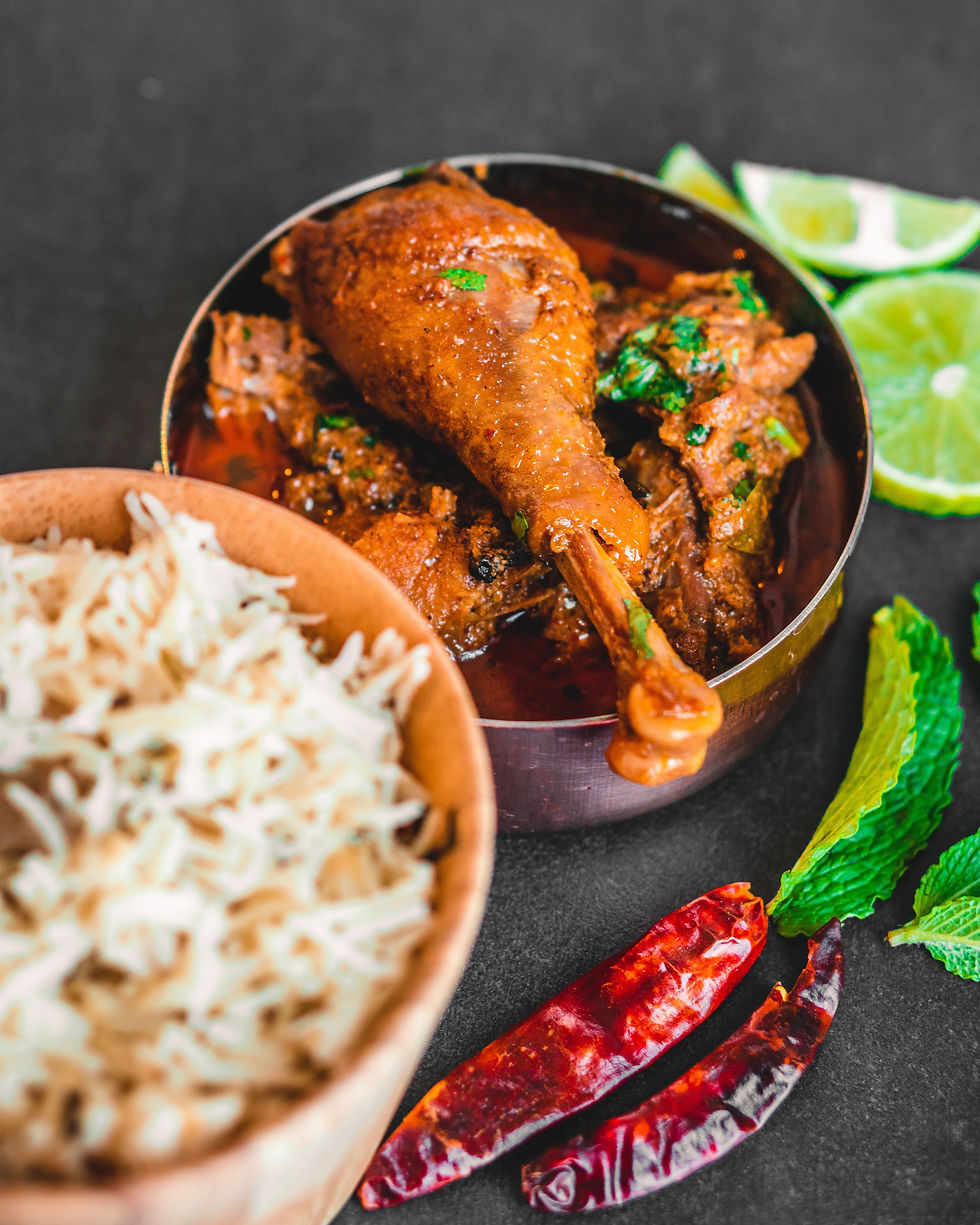Why is Chicken Tikka Masala Britain’s National Dish?
- Leah Berger

- Mar 26, 2022
- 3 min read
Updated: Mar 27, 2022
The Brits are well known for a few tasty dishes their fish and chips, mushy peas, full English Breakfast, and roast. However, none of these dishes truly represent modern England.

The UK has four national dishes. In Scotland it’s haggis, Wales has the Welsh Cawl and Northern Ireland’s is Irish Stew. The national dish of England is chicken tikka masala. While the national dishes of Scotland, Wales and Norther Ireland are rooted in local tradition, England’s national dish has a more complex history.
The origins of the dish are contested but what is certain is it's popularity. With 70% of the people in a Roots survey claiming that they enjoy Indian food at a rate of four and five on a scale out of ten, and 45% saying that chicken tikka masala is their go to order. The then foreign secretary Robin Cook, crowned chicken tikka masala as a “true British National dish” in a speech in 2000. Since then, it has been widely agreed that it certainly represents the tastes of British people across the country and was made the national dish in 2001. South Asian inspired dishes are commonly referred to as curry in England which is Indian cuisine adapted to British tastes. Curry is so popular in England that it contributes more than £5bn to the economy.

If you walk down London’s Brick Lane on any day of the week you’ll smell the aromatic spices of Indian cooking. The ties between English people and Indian cuisine run deep. They were forged in conflict, colonialism, admiration, and migration. Chicken Tikka Masala is even said to have originated in the South Asian community of England. Chicken tikka is an Indian dish, but the masala sauce was added to satisfy the English needs to have gravy with their meat. Chef Lizzie Collingham says that Britain’s love for curry was fuelled by the lack of flavour in their local food. The spicy Indian dishes were a much-welcomed change.
The logical thought would be to assume that curry only became popular because of British colonisation of India in 1858, but Indian cuisine was introduced here before this. Indian curries have been served in England from as early as 1733, when it was a popular dish at Norris Street Coffee House. The first purely Indian restaurant was opened in 1810, in Mayfair, and it was called The Hindoostane Diner.

In the early 1800s the English people began to develop a good relationship with the south Asian immigrants in the country. They admired Hinduism and frequently copied Hindu style of dress and cooking. Queen Victoria was particularly fascinated with India. She and her husband prince Albert collected Indian furniture, paintings and objects in a wing of their home, Osborne House in Isle of Wight, called the Durbar Room. She had Indian servants and regularly asked them to serve her chicken curry with dal and pilau. After colonisation, the UK opened its borders to commonwealth countries, which caused many people from South Asia to migrate. Currently, South Asian British people make up over 7.5% of the population making them the largest ethnic minority group.

While ‘curry’ has become synonymous with Indian cuisine outside of the sub-continent, its authenticity has been questioned. Our use of the word curry has been widely criticised as it is often used not to describe a particular dish, but as a collective term meaning all Indian cuisine, which is not true. The historian Alan Davidson has traced the origin of the word back to the Tamil kari, a word used to describe particular local food preparations. The word curry first appeared in the Victorian British cookbook where it was used to describe the spicy mixture. This could suggest that curry is technically not Indian at all, but instead a British appropriation, which raises the question of whether chicken tikka masala is authentic or not.
Tikka masala is an adapted Indian cuisine. Adapted to our English tastes and changed from the original traditional recipes. Much like drinking tea, eating ‘curry sauce’ on chips or grabbing a late-night kebab, eating a chicken tikka masala reflects the tastes of a baby boomer generation that were keen to embrace new cultures in a post war Britain. Stereotypical dishes have started to blur as other cultures borrow, appropriate, and reconstruct dishes and food. Maybe it can be said that the dish is in fact a British adaptation inspired by Indian roots. Making chicken tikka masala England’s national dish has opened the door for subsequent generations to try food from all over the world, leaving England firmly on the maps as one of the global food capitals.





Comments